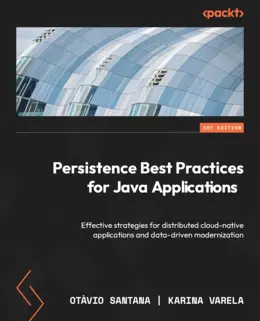Persistence Best Practices for Java Applications

eBook Details:
- Paperback: 202 pages
- Publisher: WOW! eBook (August 25, 2023)
- Language: English
- ISBN-10: 1837631271
- ISBN-13: 978-1837631278
eBook Description:
Persistence Best Practices for Java Applications: The definitive guide for designing and delivering reliable and high-performing persistence layers using Java in the cloud-native age
Having a solid software architecture breathes life into tech solutions. In the early stages of an application’s development, critical decisions need to be made, such as whether to go for microservices, a monolithic architecture, the event-driven approach, or containerization. In Java contexts, frameworks and runtimes also need to be defi ned. But one aspect is often overlooked – the persistence layer – which plays a vital role similar to that of data stores in modern cloud-native solutions. To optimize applications and data stores, a holistic understanding of best practices, technologies, and existing approaches is crucial.
- Gain insights into data integration in Java services and the inner workings of frameworks
- Apply data design patterns to create a more readable and maintainable design system
- Understand the impact of design patterns on program performance
- Explore the role of cloud-native technologies in modern application persistence
- Optimize database schema designs and leverage indexing strategies for improved performance
- Implement proven strategies to handle data storage, retrieval, and management efficiently
This Persistence Best Practices for Java Applications book presents well-established patterns and standards that can be used in Java solutions, with valuable insights into the pros and cons of trending technologies and frameworks used in cloud-native microservices, alongside good Java coding practices. As you progress, you’ll confront the challenges of cloud adoption head-on, particularly those tied to the growing need for cost reduction through stack modernization. Within these pages, you’ll discover application modernization strategies and learn how enterprise data integration patterns and event-driven architectures enable smooth modernization processes with low-to-zero impact on the existing legacy stack.
